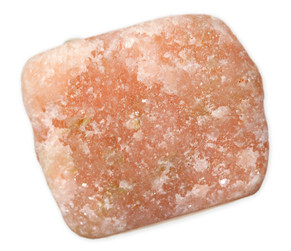|
| Name Origin | Dolomite is named after Deodat Dolomieu, French engineer and mineralogist |
|---|---|
| Chemical Formula | CaMg(CO3)2 + Fe, Mn, Zu, Pb, Co Note: CaFe(CO3)2=Ankerite. CaMn(CO3)2=Kutnahorite |
| Color | Colorless, white, gray, green, pale brown, pink (Mn present). Ankerite is tan to brown, and kutnahorite is pink. Dolomite may also be pink due to Co |
| Occurrence |
In sedimentary rocks; in Mg-rich igneous rocks that have been altered |
| Hardness | 3.5 - 4 on Mohs Scale (varies with direction in crystal) |
| Crystal System | Hexagonal. Crystals rhomb-shaped; massive or granular; twinning is common |
| Cleavage | Perfect 1 direction. Fracture sub-conchoidal. Brittle |
| Specific Gravity (SG) | 2.85; ankerite: 2.93-3.10 |
| Luster | Vitreous to pearly |
| Stone size |
Massive mineral is generally carved; often it is stained pretty colors and may naturally color banded. Faceted dolomite from New Mexico reaches a size of about 5 carats. Spanish material can provide stones over 100 carats |
| Pleochroism | None |
Note: Dolomite is a rarely seen gemstone with distinctive birefringence (as a carbonate) but is too soft and fragile to wear. Dolomite is one of the most important ores of magnesium therefore, it is a very important mineral for production of magnesium through Pidgeon process. The metal that is obtained using this method is used in home water-heaters and oil tanks, it is also used as a galvanic anode in ship's hulls to prevent corrosion. Dolomite frequently used to produce float glass. In ceramic industry, dolomite is used as a glaze ingredient.
Dolomite has two varieties, ankerite and kutnohorite. Ankerite forms when some of dolomite's magnesium replaced by iron and manganese, whereas calcium carbonate with more manganese than iron is called kutnohorite.
Dolomite has two varieties, ankerite and kutnohorite. Ankerite forms when some of dolomite's magnesium replaced by iron and manganese, whereas calcium carbonate with more manganese than iron is called kutnohorite.
Photo Credit: www.shutterstone.com





